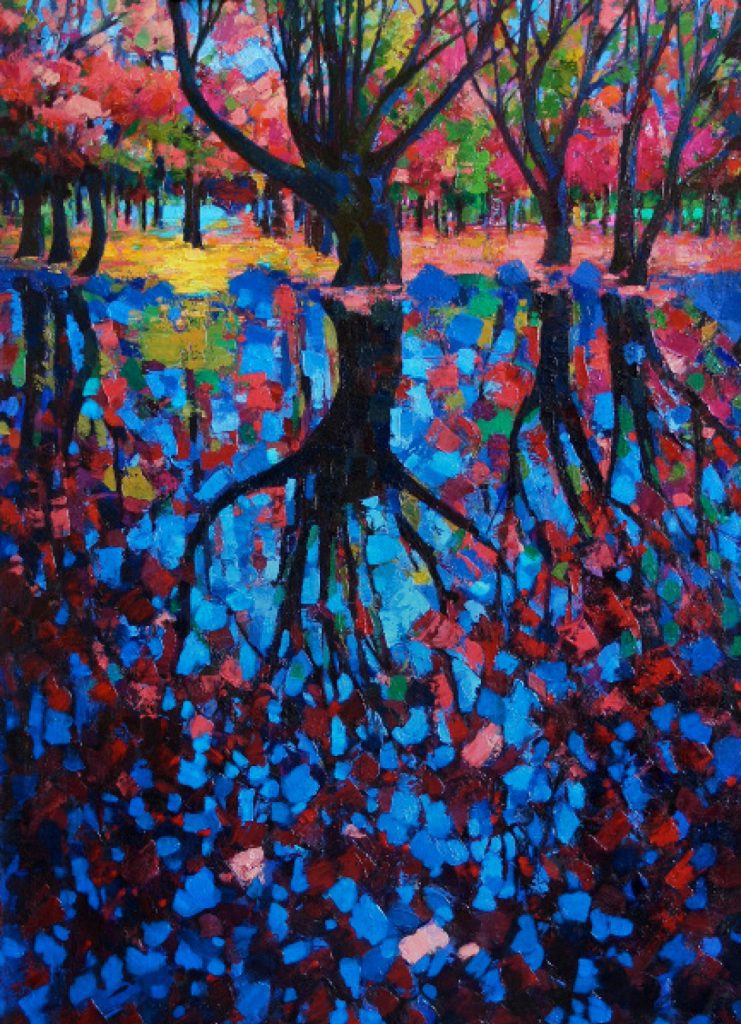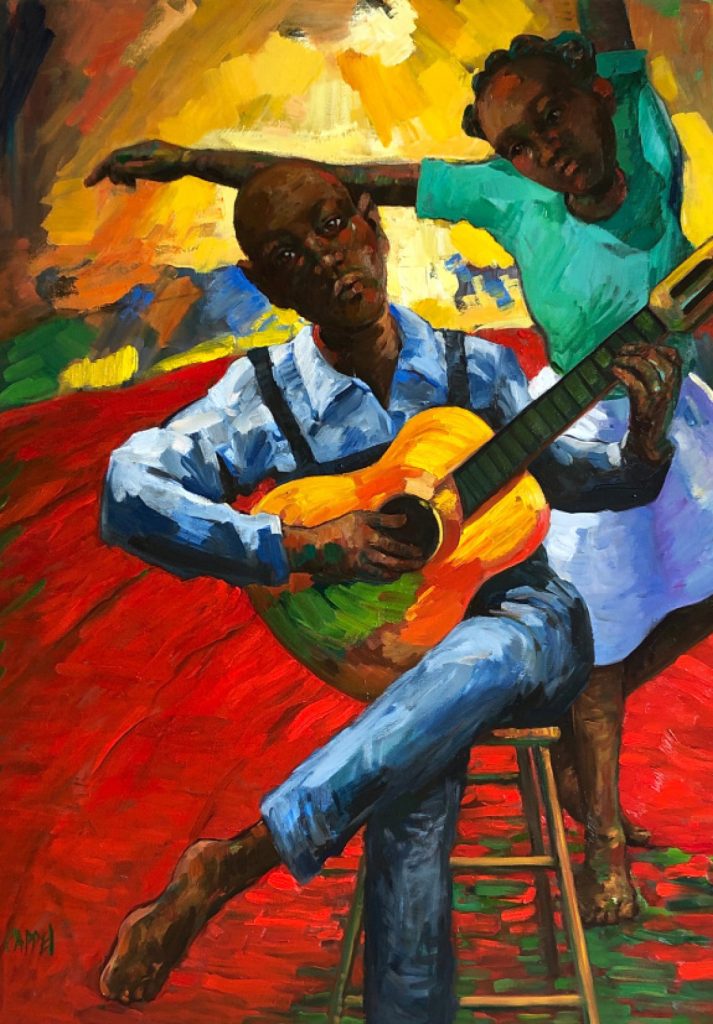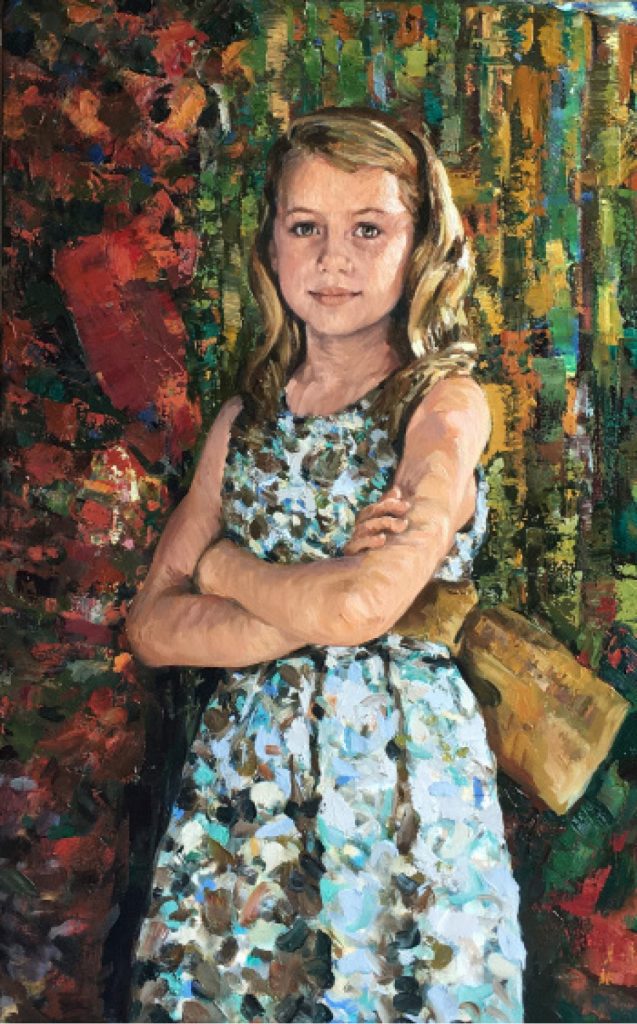Though Hurricane Laura Put Edward Cappel’s Painting On Hold, There’s Still “Plenty To Do”
By Brad Goins
Born and raised in Lake Charles, artist Edward Cappel says he “always painted.” His mother painted throughout his youth. It appears that solid parental example took root in the son. Cappel has now been painting on a regular basis for more than 20 years.
He attended medical school at LSU for 3 1/2 years. (His biographical Facebook note to the effect that he majored in “Animal Husbandry” is a joke.) In spite of his major time investment in the university’s medical program, the power of art was eventually strong enough to lure him away. Now he’s been an artist first for more than a generation. He says that during that time, he has been able to earn a living with his creative work.
Cappel prefers oils to acrylics. Oil painting, he says, is “just a robust way to paint. You can get some body with it.”
It was around the year 2000 when Cappel started painting portraits. But his range goes far beyond the portrait. Throughout his career, he’s regularly painted a variety of subjects — and a number of abstracts — in an assortment of styles and, sometimes, in a very novel palette. His canvasses can be dominated by bright reds or, in contrast, by subdued purples and pastels.
The reproductions of Cappel’s paintings on his Facebook page run the gamut from traditional realism to what appears to be pure abstraction.
“I like to bounce around,” he says. “It’s nice to try different things. I’m an equal opportunity enthusiast.” He’s pretty open in terms of what he will try to create and what he is willing to experience. Eventually he comes to appreciate much of what he experiences. “I like some crazy-looking stuff,” he says.
Realism Versus Abstraction
When it comes to the choice between realism and abstraction, “each one has its inherent difficulties,” says Cappel. “When you paint an abstract, it’s a bit of a different language. There’s no rhyme or reason. There’s no rules. Where to start?”
In contrast, realistic portrait painting “is more analytical. It starts with a lot of detail to anchor the subject.”
Cappel compares the difference between painting realistic portraits and abstract canvasses to the difference between playing free-form jazz and performing from a sheet of published music.
A realistic portrait must not only look like the person who’s being painted, but must also look the way the person commissioning the painting expects it to look. This person is often a parent; and the parent might want the painting to be done in the “classic style.”
“That’s all good,” says Cappel. “Good painting is good painting. I like it all … It’s not the subject that makes the painting,” he says, “It’s how you handle it that makes it interesting.”
Cappel feels that the process of back and forth communication between the client and the artist that leads to the creation of a solid portrait constitutes a form of collaboration. It’s a process he likes. “It’s actually nice to collaborate,” he says.
The Inevitable Hurricane Disruption
Since Laura, Cappel’s studio has been “out of commission.” His former painting studio in the Central School Arts and Humanities Center has not yet been repaired. As a result, these days he is painting at his parents’ place.
It seems as if the portrait painting business is up in the air for him at this time. That is a significant inconvenience.
Cappel says he’s been able to earn a living with his art since he began painting portraits 20 years ago. While he may not have a steady paying job at present, he notes that “there’s plenty of other stuff to do” since the storms. For example, his parents’ house received substantial hurricane damage. He’s now working hard to help repair that.
Cappel will be more than happy to pick up his brushes when things settle down again. He will continue to see painting as something that develops the artist. “It’s kind of a journey of self-realization. It’s as much about the artist as the subject.”
A Lot Of Practical Work
When he first started painting in good earnest, Cappel had just begun his undergraduate education and simply wanted some art works he could hang on his bare walls. So he decided to take a painting class each semester.
This behavior continued up to the time when Cappel was far advanced in his medical school studies at LSU.
Then, at a certain point, he “realized he didn’t want to do medicine.”
He was encouraged by the fact that he could get ample financial compensation for painting portraits. “Portraiture, he says, “was a way to make money out of the gate.” (When he started completing commissions in 2000, he was getting $200 per painting.)
“It’s invariably a challenge” to paint a portrait, he says. The task of painting requires that the painter “be [both] spontaneous and painterly and [at the same time] nail the subject.” At the end of the day, regardless of what else has happened, the person in the painting must look like the person who has been painted. To build the facility to make that happen requires “a whole lot of practical work.”
Cappel recommends that not just artists but all people everywhere spend some time studying and practicing portraiture. “It broadens your awareness,” he says.




















Comments are closed.